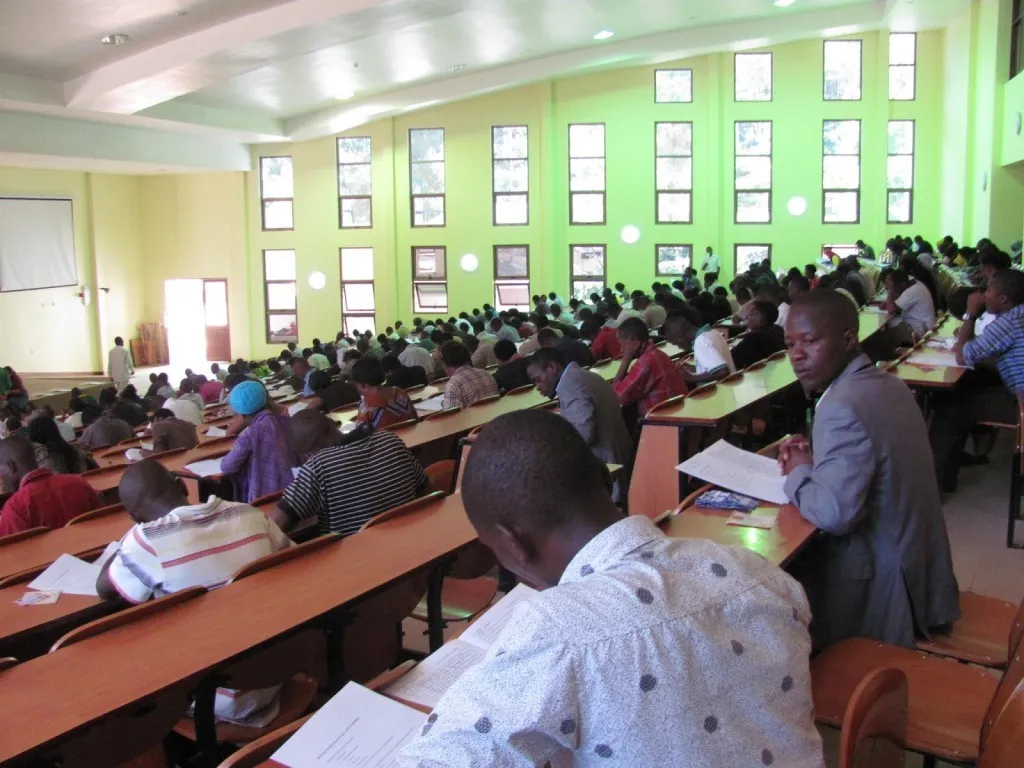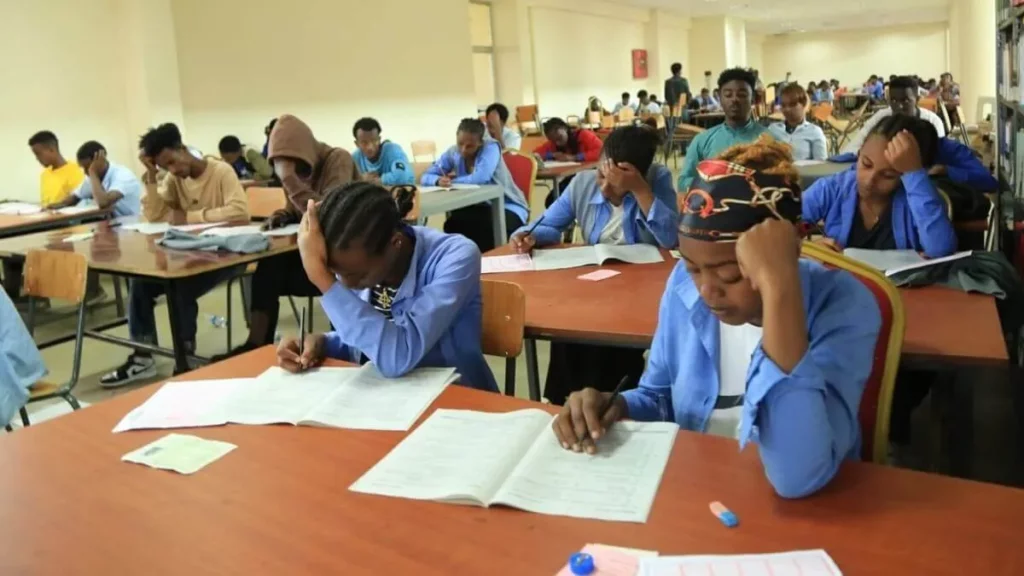NABTEB Biology Questions and Answers Latest Update
Are you wondering where you can find NABTEB Biology questions that can guide you before participating in the NABTEB exams?

The National Business and Technical Examinations Board (NABTEB) is one of the examination bodies set up by the Federal Government in 1992.
To reduce the burden of conducting examinations, which involve a lot of technical and trade-related practicals.
We have compiled a list of some NABTEB biology questions and answers to prepare you for your exams.
NABTEB Biology Questions Part I (Introductory to Biology)
Please be aware that the NABTEB Questions and Answers provided below are not leaked or actual exam materials.
Instead, these are likely questions that may help you in preparing for the NABTEB exams.
A. Question
Mention FIVE Beneficial Uses of Bacteria.
Answer: The five beneficial uses are:
1. The decaying of dead organic material into humus which serves as plant nutrients/purification.
2. The production of composite manure.
3. Conversion of atmospheric nitrogen to nitrates through ammonia and nitrites, demystification of nitrates.
4. Vinegar made from alcohol.
5. Tanning of leather
B. Question
State three places each where:
Answer: They include:
i. Viruses may be found in Air, soil, water, saliva, blood plasma, and semen cells
ii. Bacteria may be found in Air, soil, water, dirt under the fingernail, in the body of living things, toilet/latrine, compost, and gutter.
C. Question
State briefly the various methods that can be adopted in the prevention of viral disease:
Answers: They include:
1. Animals
(i). Stocking the farm with healthy animals
(ii). Feeding the animals with clean food
(iii). Keeping the animal in a clean and tidy habitat
(iv). Vaccinating the animals against viral disease
(v). Raising disease-resistant species or animals
(vi). Isolation of infected animals
(vii). Use of quarantine services.
2. Plants
(i). Using the right planting distance, method, and season.
(ii). Removing and destroying infected plants
(iii). spraying plants with pesticides at the right time
(iv). growing disease-resistant crops
(v). planting healthy seeds, seedlings, and stem cuttings
(vi). control of vectors (e.g. in cassava mosaic)
Part II (Flowering and Soil Science)
A. Question
Describe the external features of named monocotyledonous flowering plants.
Answer: Oil palm tree, maize, rice, spear grass, sugarcane, onion, plantain, banana,
pineapple, bamboo, arrowroot, cocoyam.
The description;
1. roots are numerous, long, and slender/fibrous
2. all the roots arise at the same point at the base of the stem
3. stem is long and cylindrical
4. stem shows distinct/clear nodes and internodes
5. The stem shows no branding, sometimes covered by sheathing leaf bases.
6. The leaf is long and narrow/slender/linear, with or without a sheathing leaf base.
7. leaf is parallel-veined
8. flowers are small and numerous, usually dull-colored, not sweet-smelling.
9. pendant stamens, feathery stigma on flowers.
B. Question
What is the role of green algae in an aquatic habitat?
Answer: The roles are:
1. primary producer
2. removes excess carbon dioxide
3. returns oxygen to the habitat
4. pollutes water
C. Question
Define the terms:
Answer: They are;
1. Photosynthesis
The process by which green plants manufacture carbohydrates from water and carbon dioxide using sunlight and giving off oxygen as a by-product.
2. Respiration
A process in which oxygen is used to break down organic matter to release energy in all living cells, while water and carbon dioxide are released as waste products.
D. Question
What are the differences between photosynthesis and respiration?
Answer: The differences are:
| Photosynthesis | Respiration | |
| 1 | Takes place in the time only. | Releases energy from organic matter |
| 2 | Carbon dioxide is assimilated/used up | Carbon dioxide is released |
| 3 | Oxygen is given off | Oxygen is used up |
| 4 | Water is used up | Water is liberated |
| 5 | Takes place in chloroplasts only | Takes place in all living cells |
| 6 | Takes place in the day only. | Takes place both day and night. |
E. Question
Describe ONE mechanism of transportation in the plant.
Answer: The steps of the mechanism are:
1. Root pressure
2. soil water flows into cell sap or root hairs
3. water in the root hairs moves into xylem vessels through the cortex, endodermis, and per cycle
4. water in the xylem vessels or the root is moved into the xylem of the stem branches and left under root pressure.
NABTEB Biology Questions Part III (Animal Biology)

A. Question
Give three differences between autotrophic and heterotrophic modes of nutrition
Answer: The difference is;
| No | Autotrophic Mode of Nutrition | Heterotrophic Mode of Nutrition |
| 1 | Food is taken in by holozoic, saprophytic, symbiotic, and parasitic methods. | The organisms (non-green plants and animals) depend on food made by the green plant. |
| 2 | possible only in the presence of sunlight | Possible at all times |
| 3 | Makes complex organic compounds from simple inorganic materials | Takes in complex organic compounds and breaks them down into simple absorbable forms |
| 4 | food is made by the process of photosynthesis and chemosynthesis | Food is taken in by holozoic, saprophytic, symbiotic and parasitic methods. |
B. Question
State the mechanism involved in the digestion of a piece of fish in the stomach and the small intestine.
Answer: The mechanisms are;
1. Churning/turning/mixing by the stomach wall.
2. Addition of water, enzymes, and dilute HCL/Gastric Juice.
3. Relaxation and contraction of the pyloric sphincter at the duodenum.
4. Neutralization of the acid medium from the stomach
5. Addition of water, enzymes, and bile.
ii. Question
Name the two reagents used in testing for protein
Answer: The reagents are;
1. Million’s reagent
2. Biliret’s reagent
3. Folin’s reagent
4. Xanthoproteic reagent.
C. Question
State FIVE functions of the skeleton.
Answer: The functions of a skeleton are;
1. Give shape/form to the body
2. support sort and other parts of the body
3. protect delicate organs and structures of the body
4. provides places for attachment of muscles
5. joins the muscles to bring about movement of the body
6. aids breathing
7. manufactures white and red blood cells.
D. Question
What aid would you give to a person with a suspected simple fracture of the tibia?
Answer: Some of the aids are;
i. Encourage the person to lie on his back
ii. Put a splint on either side of the leg.
iii. Bandage or tie the splints away from the injured point.
iv. Use a stretcher to take the person to the nearest hospital
v. Reassure the victim of safety.
NABTEB Biology Questions Part IV(Genetics and Ecology)
A. Question
State four physical characteristics in man, which show variation among offspring from the same parents.
Answer: The physical characteristics are;
i. Tallness, shortness, dark complexion, light complexion
ii. Hairy body, baldness, flat nose, pointed nose, thick lips
iii. Gigantism, dwarfism, fatness, thinness, albinism, knock-kneed
iv. Free/attached earlobe
v. Fingerprint
B. Question
Explain briefly ONE way in which the characteristics for tallness are passed from parent to offspring.
Answer: The different ways are;
1. The alleles for tallness can be homozygous or heterozygous, as TT or Tt
2. During gametes formation, the genes separate independently
3. Genes of gametes combine randomly during fertilization
4. A gamete carries only one member of the alleles T or t
5. During fertilization, T may combine with t to form a zygote, Tt for tallness since T for tallness is dominant over t for shortness.
C. Question
How is the sex of a human embryo determined at fertilization?
Answer: They are determined through the following ways;
i. The male produces two different gametes – Y and X
ii. The female produces only one type of gamete – X
iii. After mating, many male gametes surround the female gamete
iv. Some of this male gamete carries Y and other X chromosomes.
v. If the male gamete carrying Y fuses with the female gamete X, the zygote is XY which is a male embryo
vi. If the male gamete carrying X fuses with the female gamete X, the zygote is XX, which is a female embryo.
Part I(Introductory Biology)
A. Question
Define the term ‘Osmosis’.
Answer: Osmosis is the movement of water molecules, from their area of a higher concentration to their area of lower concentration through a semi-permeable membrane, until equilibrium is reached.
B. Question
Describe an experiment to demonstrate osmosis using a named living material.
Answer: A named living material – egg membrane, urinary bladder, base of pawpaw petiole, yam cup, pawpaw fruit, yam strip, yam tuber.
Description of the experiment:
1. Cut two thick pieces of yam tuber.
2. Peel off the bark
3. Remove the central portion to make them look like cups.
4. label them A and B
5. stand them side by side in a trough or distilled water.
6. pour some quantity of strong salt solution into A
7. leave B without a salt solution to serve as a control
8. allow set-ups to stand for 2 – 4 hours.
Result:
1. Water molecules move from the trough into yam cup A,
2. Water level in A rises.
3. Water molecules did not move into yam cup B.
Living tissues of yam as a semi-permeable membrane allowing water molecules to move from the area of higher concentration in the trough to the area of lower concentration in the yam cup A.
Yam Cup B had no salt solution, water molecules did not move into it, and its water concentration was the same as the trough.
(ii) Question
Give three physiological processes in animals that are osmosis-driven.
Answer: The processes are;
i. Movement in and out of water molecules in animal cells
ii. Re-absorption of water in the kidney tubules
iii. Absorption of water from undigested food in the large intestine/colon
iv. Haemolysis in red blood cells.
Part II(Flowering Plants and Soil Science)

A. Question
What is photosynthesis?
Answer: It is manufacturing organic substance, sugar, in green cells, in the presence of sunlight, using carbon (IV) oxide, water, and dissolved salts, giving off oxygen; as a by-product.
B. Question
Describe an experiment to show that photosynthesis can only take place in the presence of chlorophyll. (An illustrated diagram is required)
Answer: The description is;
1. Collect a variegated leaf
2. illuminated for about 4 to 6 hours
3. from a healthy growing acalypha/croton/ice plant/caladium plant
4. map the leaf/draw the leaf and label the different colored areas.
5. treat/prepare the leaf for the starch test
6. spread iodine solution on the leaf
7. compare/match the leaf with the map.
Result:
1. Green area stained black/blue black
2. Other colored areas/white/red/yellow stained brown or yellow
C. Question
List THREE importance of photosynthesis to the living thing.
Answer: The importance are;
1. Make food available for all living things
2. Makes oxygen available for aerobic respiration
3. Removes excess carbon (iv) oxide
4. Fibre for making clothes, ropes, mats, etc.
D. Question
Name two storage organs in flowering plants.
Answer: 1. Root, 2. Stem 3. leaf 4. bulb 5. corm 6. rhizome/flower
E. (i) Question
Name two organisms that help in the improvement of soil fertility.
Answer: The organisms are;
1. putrefying bacteria, nitrifying bacteria, nitrogen-fixing bacteria, blue-green algae.
2. Earthworms, termites, mushrooms, legumes.
(ii) Question
Discuss the role of ONE of the organisms named above in maintaining soil fertility.
Answer: The role of putrefying bacteria in maintaining soil fertility.
Causes decay: decompose organic remains, adding humus/plant nutrients to the soil, making soil retain water/moisture.
F. Question
State four farming practices used by man to maintain soil fertility.
Answer: The practices are;
1. crop rotation
2. shifting/fallowing method
3. monocropping
4. mixed farming
5. application of organic manure
6. application of inorganic fertilizer
7. growing cover crops/legumes.
8. Ridging of farmland
9. mulching
10. ridging across the slope.
G. Question
Three measuring cylinders with a funnel on each were placed on a table. The necks of the funnels were plugged with cotton wool.
Equal weight of soil samples were placed in the funnels as follows: Sand in the first, ground loam in the second, and ground clay in the third.
An equal volume of water was poured into the three set-ups.
i. Write the aim of this experiment
ii. state the major observation of this experiment
iii. draw and label the experimental set-ups.
Answer:
i. To compare the water-keeping capacity/porosity of different soil types
ii. The observations are;
(a) the major observation of this experiment is that water passes fast through the ground clay, faster in-ground loam, and fastest in the sand.
(b) The highest volume of water is collected in the cylinder carrying sand.
(c) Less volume of water in the cylinder carrying ground loam
(d) Least volume of water in the cylinder carrying ground clay
(e) Ground clay retains almost all the water
(f) Sand retains a negligible amount of water
Part III (Animal Biology)
A. Question
Make a large and well-labeled longitudinal section of the heart of a human being to show its structures.
B. (i) Question
Define external respiration.
Answer: This is the exchange of gases between living things and their surroundings.
ii. Question
Define internal respiration.
Answer: This is the utilization of oxygen to release energy in stored food giving off carbon (IV) oxide and water as waste products.
iii. Question
List four characteristics of respiratory surfaces.
Answer: Thin, wet/moist, vascularized; ciliated, smooth.
Part IV (Genetics and Ecology)
A. Question
Define:
i. Ecology
ii. Habitat
iii. Population
iv. Ecosystem
v. Community
Answer: The definitions are:
i. Ecology is the study of the interactions of living things with their physical environment, and with one another.
ii. Habitat is a place where an organism is found/that can sustain/support life.
iii. Population is the total number of organisms, of the same species, living together in the same place, that can reproduce fertile offspring among themselves, at a given time.
iv. Ecosystem is the collection of different organisms, living together in a place, interacting among themselves and the physical environment.
v. Community is where different populations, live together, in the same place mutually interdependent.
B. Question
Give ONE function for each of the following tools in the study of ecology.
i. Quadrant
ii. Sweep Net
iii. Pooter
iv. Depth Gauge
Answer: They are;
i. Quadrant is for sampling/determining population size-frequency and density of a species.
ii. Sweep Net is for catching/collecting insects.
iii. Pooter is for sucking in tiny/minute insects and other animals from tree barks, leaves, and rock surfaces.
iv. Depth Gauge is for measuring the depth of water in an aquatic habitat.
Attempting NABTEB Biology questions requires a solid understanding of the subject, curiosity about the wonders of life, and effective study habits.
So, as you embark on your journey to conquer NABTEB Biology, embrace the joy of discovery, stay curious, and approach each question with a combination of knowledge and critical thinking.
